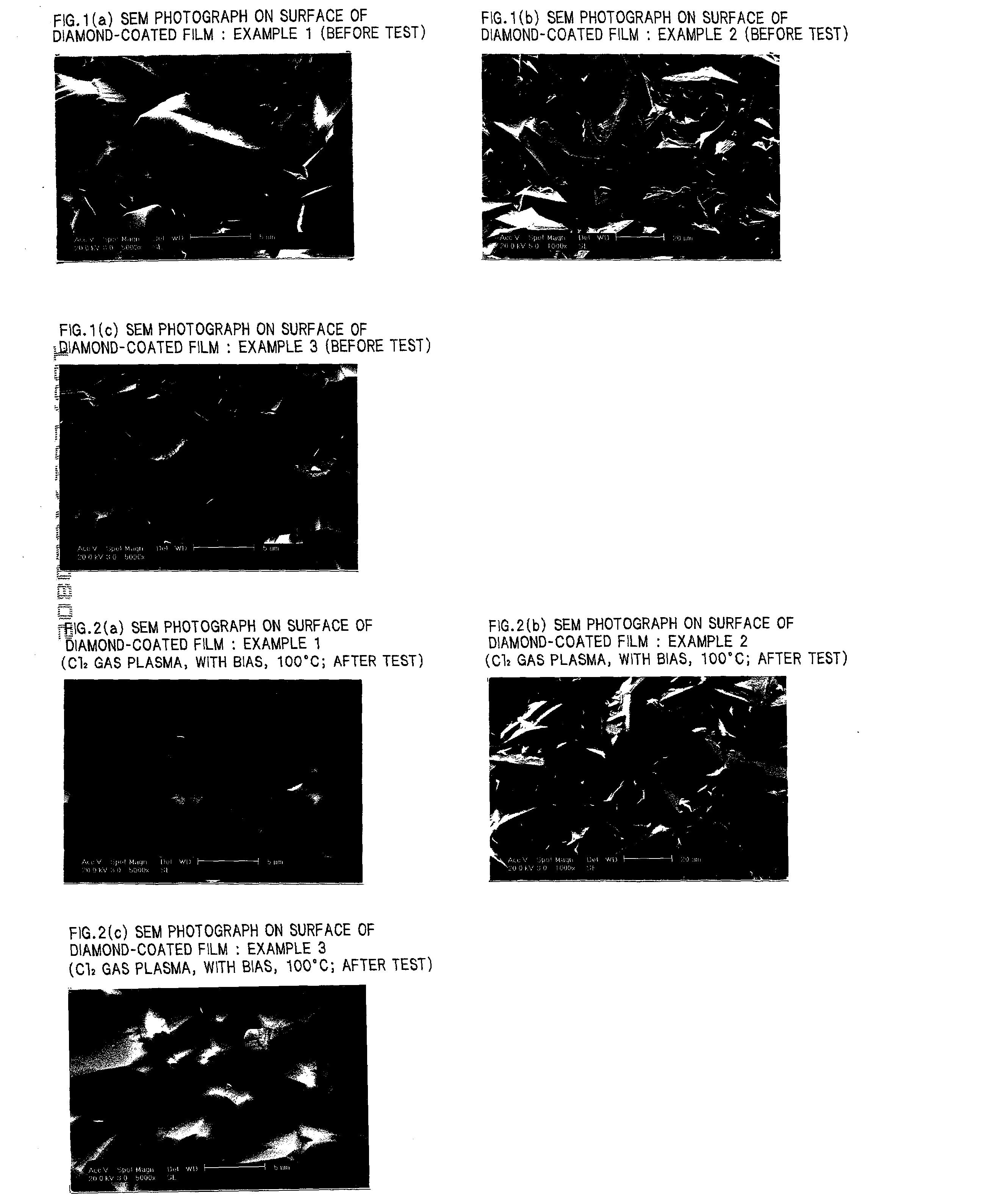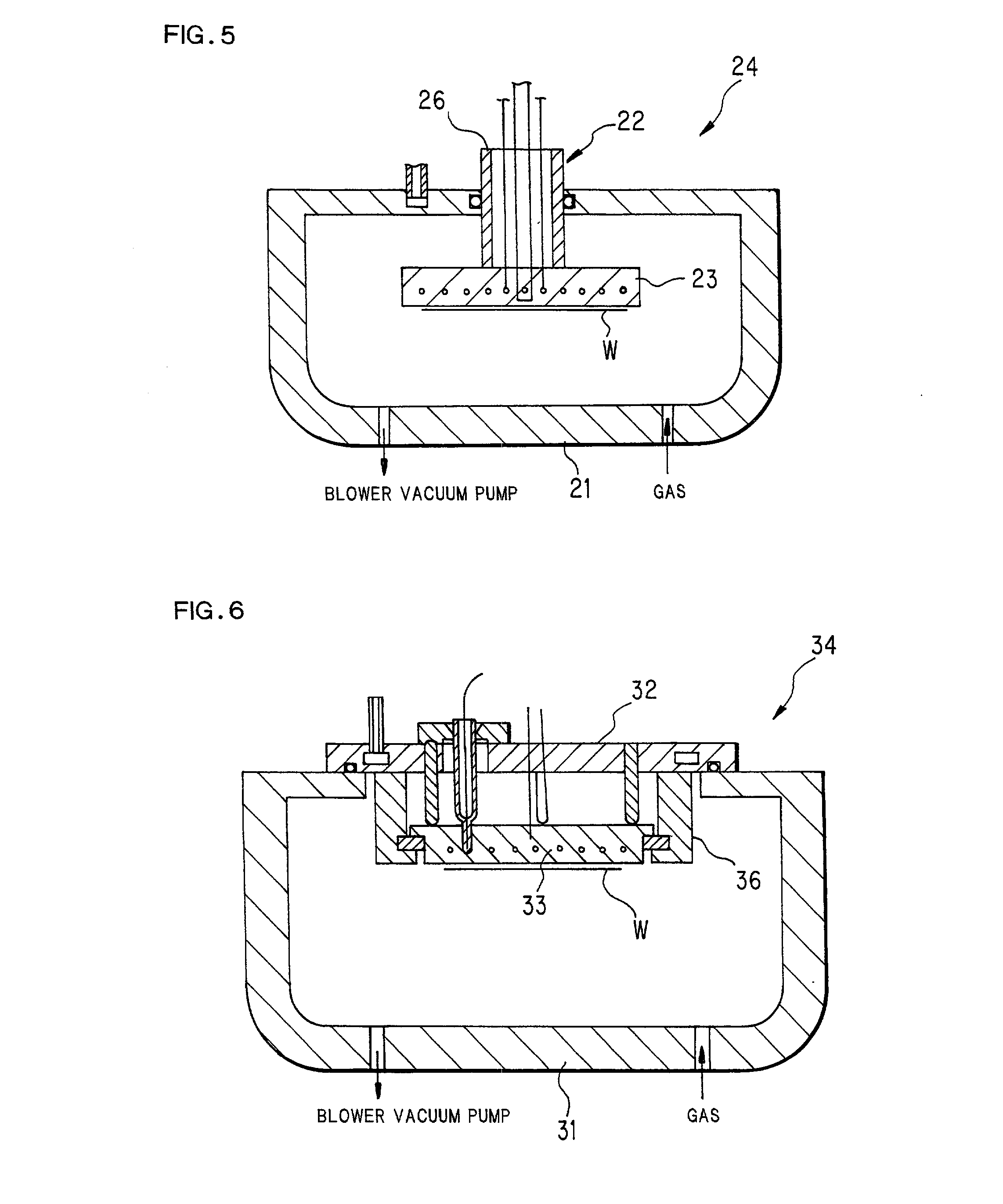Diamond-coated member
- Summary
- Abstract
- Description
- Claims
- Application Information
AI Technical Summary
Problems solved by technology
Method used
Image
Examples
examples 4-7
[0118] Subsequently, 5 wt. % of yttrium oxide was added as a sintering aid. An aluminum nitride sintered body compacted by hot pressing in nitrogen was prepared, and was cut into small pieces of 20 mm W (width).times.20 mm L (length).times.2 mm t (thickness) shape by using a diamond grinding stone. To the small pieces, silicon carbide was coated as an intermediate layer at 100 .mu.m thickness by CVD (Example 4). Also, as an intermediate layer, a 1 .mu.m-thick silicon nitride was coated by sputtering method (Example 5). Furthermore, metal silicon was coated at about 100 .mu.m-thickness by a plasma-spraying method (Example 6). In Examples 4 to 6, 15 .mu.m-thick diamond films were deposited by microwave CVD using hydrogen, oxygen as a starting gas. Basal material temperature in a film forming process was 740.degree. C.
[0119] All crystal phases in Examples 4 to 6 were diamond phase with a minor non-diamond phase. Also, the degrees of orientation were 0.70 in Example 4, 0.63 in Example 5...
examples 14 , 15
Examples 14, 15, Comparative Example 5
[0140] Then, three each of the ring made of silicon nitride (Example 14) and ring made of silicon carbide (Example 15) in the same shape as the rings in Examples 11 to 13 were prepared. For a final finish, a diamond grinding stone was used. In Example 14, ceria (CeO.sub.2: cerium oxide) was added at 5 wt. %, and was sintered by hot pressing in nitrogen atmosphere, and was compacted up to the theoretical density ratio of 99% or more. The content of the elements of the group 1a and the groups 4a to 3b in a sintered body is less than 50 ppm. In Example 15, 1 wt. % of boron and 0.5 wt. % of carbon were added, and were similarly compacted to 95% or more in argon atmosphere by hot pressing. The content of the elements of the group 1a and the groups 4a to 3b, except for boron, is less than 50 ppm.
[0141] Three each of ring of Example 14 and Example 15 were prepared, and a diamond film was deposited by the same method as in Example 1 until the thickness ...
example 16
[0148] There is provided a heater shown in FIG. 10 (Example 16) which is the same heater as in Example 8, but has no basal material between a high frequency electrode and a diamond film, and directly coated with diamond on the electrode. Exemplarily, the same heater as in Example 8 was prepared, and the film on a heating face was removed with a diamond grinding stone, thereby a molybdenum mesh high frequency electrode was exposed. Aluminum nitride as a basal material was in the openings of the mesh. Subsequently, a diamond film was formed at about 15 .mu.m thickness by the same method as in Example 1.
[0149] As in Example 8, preferable results were obtained. This method is preferable in that the diamond film itself operates as a high frequency electrode. That is, in ordinary ceramic heaters, a high frequency electrode has to be embedded in a ceramic basal material to protect the electrode from corrosive gas. However, diamond has some conductivity, so that it also operates as a corros...
PUM
| Property | Measurement | Unit |
|---|---|---|
| Fraction | aaaaa | aaaaa |
| Fraction | aaaaa | aaaaa |
| Fraction | aaaaa | aaaaa |
Abstract
Description
Claims
Application Information
 Login to View More
Login to View More - R&D
- Intellectual Property
- Life Sciences
- Materials
- Tech Scout
- Unparalleled Data Quality
- Higher Quality Content
- 60% Fewer Hallucinations
Browse by: Latest US Patents, China's latest patents, Technical Efficacy Thesaurus, Application Domain, Technology Topic, Popular Technical Reports.
© 2025 PatSnap. All rights reserved.Legal|Privacy policy|Modern Slavery Act Transparency Statement|Sitemap|About US| Contact US: help@patsnap.com



